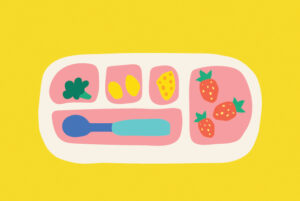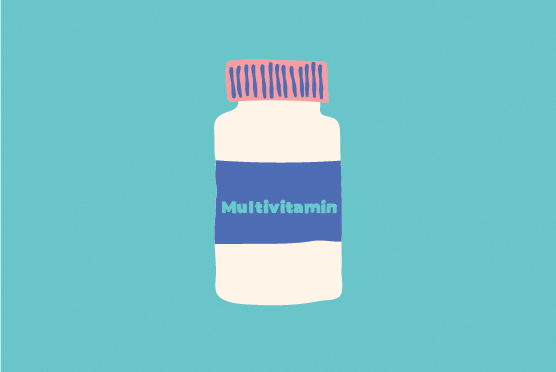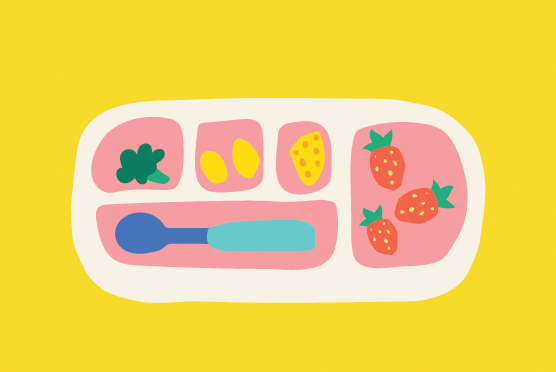Inside this article
A healthy balanced diet is crucial for a growing child as it supports key areas of their development. There is currently a lot of focus on how parents can create healthy diets for their children, which of course we know to be important. However, this article explores the alternative question of whether a child’s diet be too healthy. Read on to find out if this is true and to learn how as a parent you can strike the perfect balance.
Why is a healthy diet important for children?
Children grow and develop very quickly, and eating well is essential to support the developmental processes. A well-rounded diet, rich in vitamins and minerals, can:
- Support and strengthen the immune system, which reduces the likelihood of coughs, colds, and other illnesses.
- Help children meet their growth milestones, as nutrients such as amino acids found in protein are the body’s building blocks.
- Provide vital energy for physical activities which is crucial for strengthening bones and muscles.
- Help children to maintain a healthy weight through a balanced intake of nutrients.
- Promote good dental health, by building strong teeth and gums and lowering the risk of cavities, tooth decay, and other dental problems.
- Prevent nutritional deficiencies, providing essential vitamins and minerals for healthy development.
- Foster a positive relationship with food, lowering the risk of potential future eating disorders or issues with weight management.
- Enhance cognitive functions like memory, concentration, and learning making school and exams easier to manage.
- Reduce the risk of chronic diseases such as diabetes or heart disease later in life.
What does a healthy diet look like for children?
A healthy diet for children is balanced, varied, and includes all the essential nutrients needed to support their growth, development, and overall well-being.
Including quality protein sources like eggs, meat, fish, and pulses (beans, lentils, chickpeas) is key. These foods provide essential amino acids for growth and development and are also rich in iron to prevent anaemia, a common concern in children.
Each meal should also include some carbohydrates as these are a key source of energy for active children, and they help fuel their activities throughout the day. Good examples to include at breakfast, lunch and dinner are oats, wholegrain cereals such as Weetabix, wholemeal bread, potatoes, pasta, rice, or grains like couscous or quinoa. Carbohydrates are a key energy source, fueling children’s activities throughout the day. Having a wider variety across your meals is also great to support overall nutrient intake.
Although it can be difficult if you have fussy children, aiming for five portions of fruits and vegetables daily supplies children with essential vitamins and minerals that bolster the immune system, reducing the likelihood of common illnesses like colds.
Incorporate two to three servings of calcium-rich foods each day, such as milk, cheese, and yoghurt, to support healthy bone and teeth development.
Healthy fats also play an important role, these are essential for energy, hormone production, brain development, and nutrient absorption. Nuts, seeds avocados, olive oil and oily fish are all good examples that can be easily added to meals and snacks.
Although they can be easy and convenient, the advice to parents is to avoid over-reliance on processed foods. This is because processed foods can contain much higher levels of salt, saturated fat and sugar and can be much higher in energy which can have an overall negative effect on their health.
Can a child’s diet be too healthy?
As we have just seen, a nutritious diet is essential for growth, development, and health, however, it is possible to go too far in restricting foods or obsessing over “perfect” eating habits. Here’s why finding balance within your child’s diet is crucial.
The problems with over-restriction
Restricting certain foods entirely from a child’s diet is often unnecessary and in some cases, can do more harm than good. An overemphasis on “healthy” foods may negatively impact a child’s relationship with food in the long term, leading to disordered eating patterns or an unhealthy preoccupation with food.
Labeling foods as “bad” or “unhealthy” can also backfire. When children encounter these foods outside the home such as at friends’ houses or at parties they may overindulge or develop an unhealthy relationship with them in the future. Focusing only on “healthy” foods can also create stress around mealtimes for both the parent and the child, potentially leading to anxiety that carries into adulthood. One way to avoid labeling foods is to offer foods all on one plate, rather than having a main meal followed by a pudding you can put all the foods on the same plate at the same time to avoid some foods being in a ‘teat’ or ‘pudding’ category.
Carbohydrates and fat get a bad reputation but as we have seen above they are important for growing children. Having too little carbohydrates or opting for low-fat, low-calorie foods too frequently, can deprive children of the energy they need for daily activities and growth.
While it is important to include ample nutritious options to support your child’s nutritional intake, over-restricting or putting too much emphasis on healthy foods could also have a negative impact in the long term.
Encourage social development through food
Food plays a central role in social gatherings like birthdays and holidays. While moderation with foods high in sugar, salt, or saturated fat is important, having strict restrictions or rules in place could leave children feeling left out in social settings. Allowing children to experience a variety of foods helps them build a positive relationship with food. Social eating, whether at a friend’s house, family gathering, or school, encourages children to try new tastes and textures, fostering a positive attitude toward food.
The role of fat in a child’s diet
Fat often has a poor reputation in diet culture, leading to misconceptions that low-fat diets are ideal. While excessive fat or the wrong types can have negative health effects, fat as we mentioned above is essential for children. It provides energy, supports hormone production, and aids in normal growth. Foods rich in healthy fats like dairy, oily fish, nuts, seeds, olive oil, and avocados are nutrient-dense and important for development. Oily fish, in particular, contains essential fatty acids that the body cannot produce on its own and should be incorporated into a child’s diet regularly.
Although saturated fat is associated with certain health risks, certain foods higher in saturated fat, like dairy products, are vital for children. Milk, yogurt, and cheese contain calcium and vitamin B12 which are necessary for bone growth and overall health. On the other hand, processed foods like cakes, biscuits, and pastries have low nutritional value but a high-fat content and should be limited.
For children under two, two servings per day of full-fat dairy products are recommended to support rapid growth. After age two, if a child is growing well, lower-fat options can be gradually introduced. After the age of two, as long as your child is eating and growing well, you can introduce lower-fat dairy products and from 5 years old, semi-skimmed or skimmed milk is ok to be given as a main drink.
Striking a healthy balance
Evidence suggests that the bigger concern in the current food environment is children’s diets being not healthy enough rather than them being too healthy. Modern diets often include too many ultra-processed foods, insufficient fruits and vegetables, and too much sugar. To maintain a healthy diet, balance is key. The aim is for children to enjoy a variety of foods without over-restricting certain types.
Here are some top tips:
- Aim for 5 portions of fruit and vegetables per day
- Encourage structured meals with diverse food groups, including protein, carbohydrates, fruits or vegetables, and healthy fats.
- Remember that moderation is essential, occasional indulgence in less nutritious foods, like sweets or fast food, is part of a balanced approach
- Use snacks as an opportunity to introduce nutrient-dense foods rather than processed foods high in sugar or fat.
- Get children involved in cooking to help them understand the importance of a balanced diet, fostering a healthy relationship with food for life
By focusing on variety and moderation, parents can help their children develop healthy eating habits and a positive relationship with food, laying the foundation for a lifetime of well-being.









